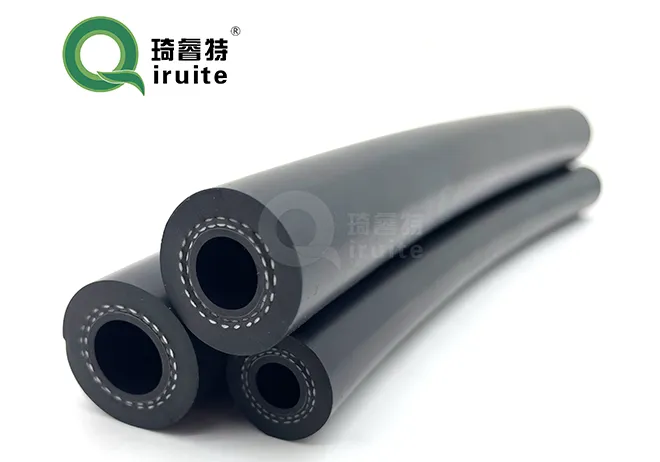Air Hose Connector for Pneumatic Systems and Industrial Applications
Understanding Pneumatic Air Hose Connectors A Key Component in Pneumatic Systems
In the world of pneumatic systems, the efficiency and performance of equipment greatly depend on the components used. One crucial element that often goes unnoticed but plays a significant role in ensuring seamless operation is the pneumatic air hose connector. These connectors serve as the vital link between different parts of a pneumatic system, enabling the transfer of compressed air and ensuring that tools and machinery operate effectively. This article delves into the purpose, types, and selection criteria of pneumatic air hose connectors.
The Purpose of Pneumatic Air Hose Connectors
Pneumatic air hose connectors are designed to connect hoses and tubes in pneumatic systems, facilitating the flow of compressed air from one component to another. They play a critical role in various applications, including manufacturing, construction, automotive, and maintenance. By ensuring a secure and leak-free connection, these connectors help maintain the pressure necessary for tools and equipment to function correctly.
In addition to connecting hoses, pneumatic air hose connectors provide the ability to quickly disconnect and reattach hoses as needed. This feature is especially beneficial in environments where tools must be frequently changed or serviced. Quick-connect designs allow users to swap out tools effortlessly, enhancing productivity and reducing downtime.
Types of Pneumatic Air Hose Connectors
Pneumatic air hose connectors come in various designs and styles, with each type tailored to meet specific requirements
. Some of the most common types include1. Barbed Connectors These connectors feature a tapered end that fits snugly into a hose. The barb design creates a strong grip, minimizing the chances of air leaks. Barbed connectors are often used in low-pressure applications.
2. Threaded Connectors These connectors have male or female threads that screw into compatible threaded fittings. They are commonly used in high-pressure applications and provide a durable connection. Proper sealing methods, such as Teflon tape or thread sealant, are often used to ensure leak-free connections.
3. Quick Disconnect Couplings These connectors allow for rapid connection and disconnection without the need for tools. They are particularly useful in situations requiring frequent changes of hoses or attachments. Quick disconnect couplings come in various configurations, including automatic and manual types.
4. Push-to-Connect Fittings As the name suggests, these fittings allow hoses to be connected by simply pushing them into the fitting. They provide a convenient solution for quick connections and are popular in both pneumatic and fluid applications.
pneumatic air hose connector

5. Swivel Connectors These connectors feature a rotating design that allows for flexible movement of the hose without twisting or kinking. This design is particularly useful in environments where the hose needs to navigate around obstacles.
Selecting the Right Pneumatic Air Hose Connector
Choosing the right pneumatic air hose connector is essential for ensuring optimal performance and safety in pneumatic systems. Here are key factors to consider when making a selection
1. Application Requirements Consider the specific needs of your application, including the pressure levels, temperature ranges, and types of fluids being transported. Different connectors are designed to accommodate various conditions.
2. Compatibility Ensure that the connector is compatible with the hoses and fittings being used in the system. This includes checking the diameter, thread type, and material compatibility.
3. Material Pneumatic connectors are available in various materials, including brass, stainless steel, and plastic. The choice of material should align with the environmental conditions and the types of fluids being carried.
4. Ease of Use Depending on the frequency of connection and disconnection, you may prefer connectors that allow for quick changes. Assess whether a barbed, threaded, or quick-disconnect connector would be most appropriate for your situation.
5. Cost and Quality While it might be tempting to go for lower-cost options, consider the long-term implications of quality and durability. Investing in high-quality connectors can prevent leaks, reduce maintenance costs, and extend the life of the pneumatic system.
Conclusion
In conclusion, pneumatic air hose connectors are essential components in any pneumatic system, ensuring the efficient transfer of compressed air between tools and equipment. By understanding the various types of connectors available and considering the specific requirements of your application, you can make informed decisions that enhance the performance and reliability of your pneumatic systems. Whether you are in manufacturing, construction, or any other field utilizing pneumatic technology, the right connector can make all the difference.
-
Ultimate Spiral Protection for Hoses & CablesNewsJun.26,2025
-
The Ultimate Quick-Connect Solutions for Every NeedNewsJun.26,2025
-
SAE J1401 Brake Hose: Reliable Choice for Safe BrakingNewsJun.26,2025
-
Reliable J2064 A/C Hoses for Real-World Cooling NeedsNewsJun.26,2025
-
Heavy-Duty Sewer Jetting Hoses Built to LastNewsJun.26,2025
-
Fix Power Steering Tube Leaks Fast – Durable & Affordable SolutionNewsJun.26,2025

